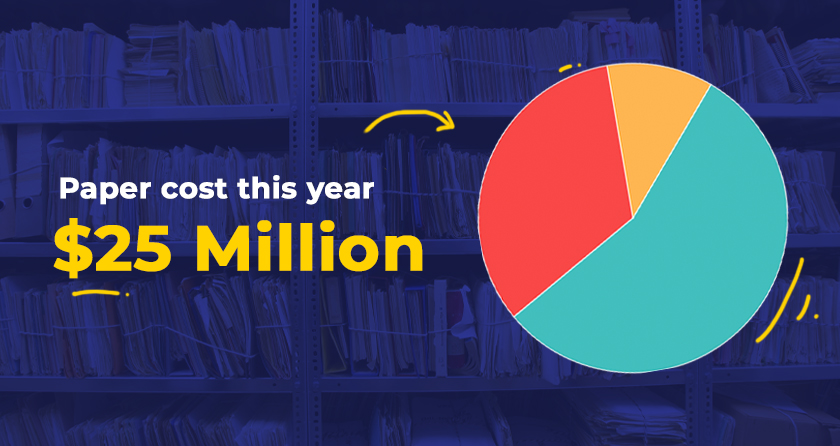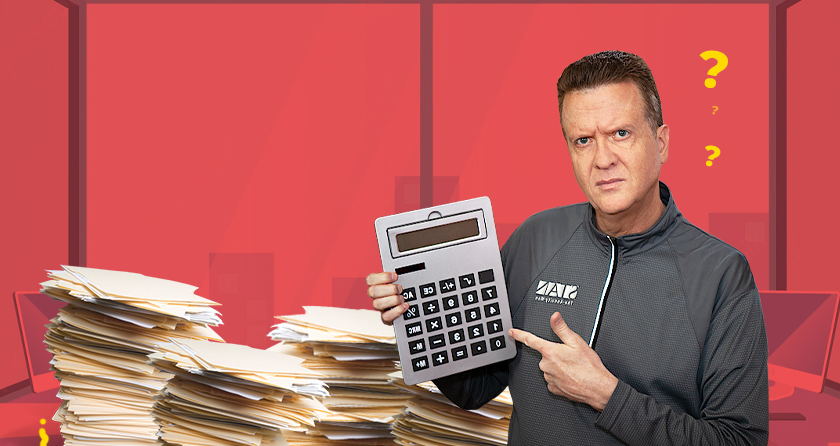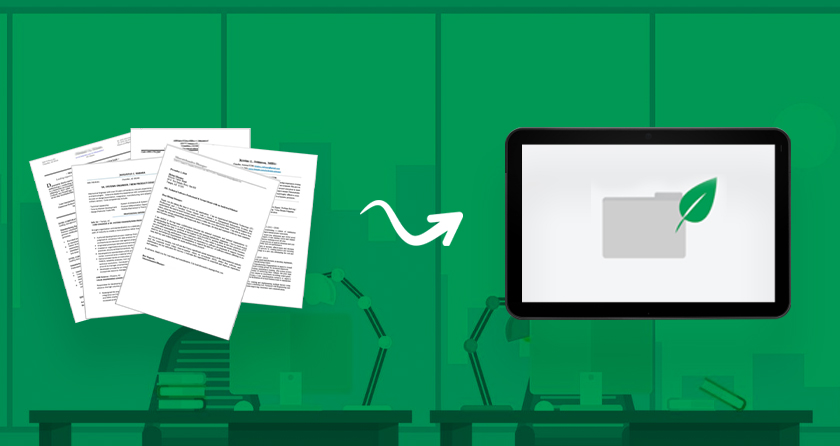
If you still haven’t embraced a paperless environment or are planning to move towards a digital based workflow, some of the costs associated with paper will convince you differently.
It’s about billions
On average, each year, a worker uses almost 10,000 sheets of paper. The approximate cost of 10,000 sheets of paper is $120. Now multiply it by the number of employees you have in your office. You can only know the actual cost of paper if you follow the paper trail, otherwise, it is almost next to impossible.
Why do we rely so much on paper, even in 2022? The current working generation grew up with the crispiness of paper and comforting familiarity with ink. The global pen market already reached $15 billion in sales in 2017 and is expected to reach the bar of $19 in 2025.
Indeed, Gen Z is now more comfortable with digital than analog and most organizations are embracing digital transformation, still, it has not resulted in the reduction of paper waste. The overall demand for paper is projected to double before 2030.
The Reasons Why We Should Encourage a Go Paperless Environment-
Supply costs:
The paper-based job environment always includes printers, tonners, cartridges, photocopies, paperclips, folders and cabinets. All these items in an organization often add up to almost $400,000 a year.
Energy costs:
Can you ignore the burgeoning electricity cost in your office for all the printers?
Productivity:
Office workers spend many man-hours searching specific files from piles and piles of paper-based files. It’s really difficult to make an intuitive file structure with thousands of paper-based files. Instead of focusing on making more revenue for your organization, your employees are wasting their time searching for files.According to a recent report published by McKinsey-“ employees spend 1.8 hours every day—9.3 hours per week, on average—searching and gathering information. Put another way, businesses hire 5 employees but only 4 shows up to work; the fifth is off searching for answers, but not contributing any value.”
How Much Does Paper Cost:
 According to Gartner’s research, 18 minutes is the average time for an employee to search and find a paper-based file and this time can go up to 120 minutes if the file is misplaced. Furthermore, the research also shows that employees waste almost 150 man-hours on searching files in the cabinets. At $30/hour, an employee wastes almost $4,500 each year doing nothing more than searching for the critical document. Now multiply this amount by the total number of employees you have in your organization.Assuming the standard yearly salary of $80,000, the inability to find critical documents costs an organization that has 1000 employees, $25 million each year.
According to Gartner’s research, 18 minutes is the average time for an employee to search and find a paper-based file and this time can go up to 120 minutes if the file is misplaced. Furthermore, the research also shows that employees waste almost 150 man-hours on searching files in the cabinets. At $30/hour, an employee wastes almost $4,500 each year doing nothing more than searching for the critical document. Now multiply this amount by the total number of employees you have in your organization.Assuming the standard yearly salary of $80,000, the inability to find critical documents costs an organization that has 1000 employees, $25 million each year.
So, now you might have realized that paper is an expensive affair and it’s time to give it a second thought.
Some crucial pointers that you should know, especially when you are still using a paper-based model-
- On average, the labor cost of filing a document is $20
- Every day, between 2% to 5% of the files are lost or misplaced in the organizations
- It costs almost $120 to find and retrieve a misplaced file
- When it comes to recreating a lost document, on average it takes 25 hours
- Most employees don’t find 10% to 12% of the files on the first attempt
- An employee spends almost 400 hours per year searching files
- More than 70% of the organizations can fail within 21 days if their paper-based critical documents get lost due to catastrophic reasons like fire or flood
- A standard document is copied19 times
- Each standard four-drawer cabinet accommodates almost 1200 files but it occupies 9-square feet of floor space and costs almost $1,5000 a year
So, the key takeaways from all these numbers boil down to one fact, paper is a problem and inefficient.
Save money and the environment, and make your employees happier than before-
It’s high time you should automate your paper-based manual document storage process with digital workflows. ARC offers the bulk document scanning service that enables you to turn all your paper-based documents into instantly searchable and accessible digital information. With our bulk document scanning solution, you can ensure improved collaboration, better decision ability, and no time-wasting on chasing paper-based information. Get rid of all the printers and photocopies with ARC.
Now, It’s Time To See The Differences Between Paper Vs Digital Documents

|
Points |
Digital Documents | Paper Documents |
|---|---|---|
| Easy Access | Access documents from any location anytime | It involves a time consuming and laborious process to access any specific document |
| Use of space | Digital documents do not need any physical space as they can be stored in the cloud | Paper-based documents always require the large cabinets and physical storage that occupy a substantial amount of office space |
| Access control | In a digital document environment, you can provide the document access to the authorized body only | In a paper-based document system, it’s really hard to allow access control, thus making information more vulnerable to theft or misused. |
| Searchability | The advanced document scanning service uses OCR technology that allows users to search documents with proper keywords | In a paper-based environment, employees often struggle to find any specific information. |
| Editing | Any authorized person can edit the digitized document | If the paper documents are left open, anyone can make changes or edit the information |
| Cost-Effective | In a digital environment, you won’t have to bother about the cost related to printers, photocopies, inks, papers, tonner, electric consumption, and anything related to paper | As we have already mentioned above organizations relying on a paper-based system often pay up to $480, 000 yearly for managing all the paper-related costs |
|
Environment Friendly |
Paper-less work culture always promotes an environment-friendly initiative |
More papers mean more carbon footprints on our environment |
With ARC, upgrade from paper to digital and embrace the most efficient, collaborative, and convenient work culture in your organization.
